User Guide

Around the World in $80 (AWE) is a desktop application for keeping track of spending and expenditure during travels, splitting expenses with travel-mates, and facilitating easy recollection of debts at the end of every trip. AWE is the world’s only bespoke app designed for group travellers.
The app promises to revolutionize the group-travel space. With AWE, bills can be split and monitored in a centralized manner that minimizes the potential for disputes and maximizes the efficiency of payment and recollection of debts.
AWE’s vision is a more interconnected world where relationships are more easily built and maintained. Our mission is to accomplish through a user-centric approach that seeks to provide the user with what they need, at the tip of their fingertips. This document marks the first step towards the accomplishment of that mission, and the beginning of your journey around the world.
Table of Contents
- 1. About the Document
- 2. Quick start
-
3. Features
- 3.1. Contacts
-
3.2. Groups
- 3.2.1. Listing all groups :
groups - 3.2.2. Creating a travel group:
creategroup - 3.2.3. Deleting a travel group:
deletegroup - 3.2.4. Locating group by name:
findgroups - 3.2.5. Adding a contact to an existing group:
groupaddcontact - 3.2.6. Removing a contact from an existing group:
groupremovecontact - 3.2.7. Adding a tag to an existing group:
groupaddtag - 3.2.8. Removing a tag from an existing group:
groupremovetag - 3.2.9. Editing travel group name:
groupeditname
- 3.2.1. Listing all groups :
-
3.3. Expenses
- 3.3.1. Listing expenses of a specified group:
expenses - 3.3.2. Adding a shared expense:
addexpense - 3.3.3. Deleting a shared expense:
deleteexpense - 3.3.4. Locating a shared expense by description:
findexpenses - 3.3.5 Calculating total spending of each user:
transactionsummary - 3.3.6. Calculating payments to make:
calculatepayments
- 3.3.1. Listing expenses of a specified group:
- 3.4. Miscellaneous
- 4. FAQ
- 5. Command summary
- 6. Final Word
1. About the Document
The purpose of this document is to make sure that you have a pleasant and intuitive experience when using our app. In line with our user-centric approach, the guide is structured to ensure that the knowledge of the workings of our app is easily accessible. The document serves as a guide for users to understand the way to use our app to extract maximum satisfaction.
To accomplish this, we have taken the following steps
- We provide you with a glossary of contents to explain away some vocabulary that you might find confusing, so that you can focus on exploring AWE to the full extent of its functionalities.
- We provide you with the tools to be able to read this guide with little need for re-referencing previous sections.
Section 1 provides readers with a brief overview of how to use this document. Section 2 details the setting up of AWE and Section 3 documents the main features of AWE. If you still face problems using AWE, refer to our FAQ in Section 4. For a summary of all the commands available, refer to Section 5.
Click here to return to table of contents
1.1 Glossary
| Term | Explanation |
|---|---|
| Command Line Interface (CLI) | The Command Line Interface, or CLI for short, is the user interface on which AWE is based. This means that most of AWE’s functionality is unlocked by the typing of inputs by the user, rather than the clicking of a mouse or the selection of options via a menu. |
| Graphical User Interface (GUI) | The Graphical User Interface, or GUI for short, is a user interface which supports all of its features through the clicking of a mouse or the selection of options via a menu. It does not require users to type in commands. |
| Command | Commands are the user inputs that trigger the specific features of the app. Commands are often denoted in highlighted letters. For instance, to create a group, the creategroup command is utilized. |
| Parameter | A Parameter refers to a specific detail required for a command. For instance, adding a contact within an app would require details such as the contact’s name. In this case, the name is a parameter of this command. Parameters are often denoted in the guide in highlighted uppercase letters, for eg. NAME. |
1.2 Format of commands
If you wish to jump straight into using our features, refer to Section 5 for the summary of commands. Here are some key pointers to take note of.
- Words in
UPPER_CASEare parameters to be supplied by you. - Words that are enclosed in
[ ]denote optional parameters that the user can choose to enter or leave out. - You will notice that our commands require you to use characters such as
n/,t/, etc. This allows our programme to locate which words belong to which category of input.
Click here to return to table of contents
2. Quick start
AWE’s primary asset is its speed. Unlike traditional Graphic User Interfaces (GUIs) which rely on slow actions such as mouse clicking and selection of options from long menus, with its CLI, AWE offers users the benefit of speed. For those who type fast, the app will be faster than most mainstream contact management apps. For those who are not as fast, familiarity with the commands over time will allow you to harness the full capabilities of AWE.
-
Ensure you have Java
11or above installed in your Computer. Follow this guide to install it. -
Download the latest
awe.jarfrom here. -
Copy the file to the folder you want to use as the home folder for your tp.
-
Double-click the file to start the app. The GUI similar to the below should appear in a few seconds. Note how the app contains some sample data.
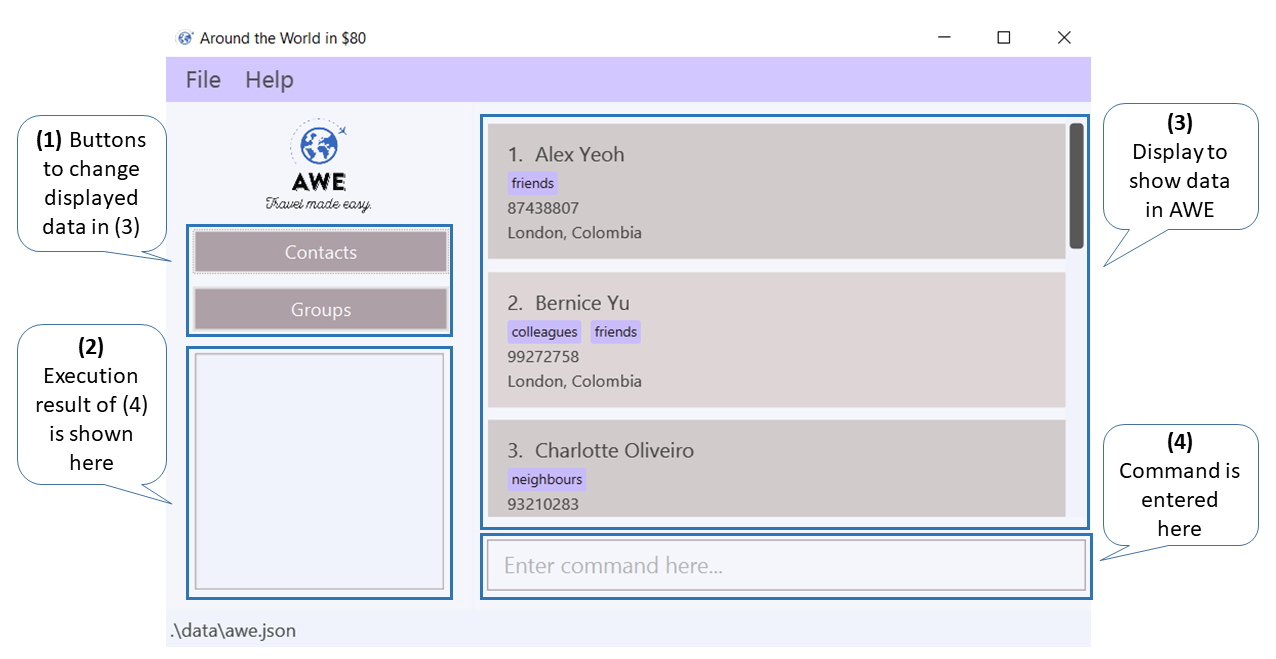
Fig 1. Layout of AWE
Click here to return to table of contents
-
Type the command in the command box and press Enter to execute it. e.g. typing
helpand pressing Enter will open the help window.
Some example commands you can try:-
contacts: The commandcontactslists all contacts. -
groups: The commandgroupslists all groups. -
expenses: The commandexpenses gn/Londonlists all expenses in the groupLondon. -
addcontact: The commandaddcontact n/John Doe p/98765432adds a contact namedJohn Doeto AWE. -
deletecontact: The commanddeletecontact 3removes the 3rd contact shown in the current list. -
creategroup: The commandcreategroup gn/Bali n/John Doe n/Alex Yeoh t/friendscreates a group named Bali containing membersJohn DoeandAlex Yeoh, with the tagfriends. -
deletegroup: The commanddeletegroup gn/Baliremoves the group named Bali. -
addexpense: The commandaddexpense n/Alex Yeoh gn/Bali $/50 d/drinksadds an expense paid for byAlex Yeohinto the groupBaliof$50fordrinks. -
deleteexpense: The commanddeleteexpense 1removes the 1st expense (by one-based-index) from the list of expenses visible to the user. -
transactionsummary: The commandtransactionsummary gn/Baliprovides a list of spending made by each user in the group named Bali. -
calculatepayments: The commandcalculatepayments gn/Baliprovides a list of payments to be made between users to settle debts for the group named Bali. -
clearalldata: The commandclearalldataremoves all expenses / contacts / groups. -
editcontact: The commandeditcontact 1 n/Thomas Bettyedits the name of the 1st contact to be Thomas Betty and removes all existing tags. -
exit: The commandexitexits the app.
-
-
Refer to the Features below for details of each command.
Click here to return to table of contents
3. Features
Breakdown of command abbreviations:
-
d/: Description (1 to 50 characters in length) -
gn/: Group Name (1 to 50 characters in length) -
n/: Name (1 to 50 characters in length) -
p/: Phone number (3 to 16 digits in length) -
t/: Tag (1 to 50 characters in length) -
$/: Cost
Notes about the command format:
-
Words in
UPPER_CASEare the parameters to be supplied by the user.
e.g. inadd n/NAME,NAMEis a parameter which can be used asadd n/John Doe. -
Items in square brackets are optional.
e.gn/NAME [t/TAG]can be used asn/John Doe t/friendor asn/John Doe. -
Items with
… after them can be used multiple times including zero times.
e.g.[t/TAG]…can be used ast/friend,t/friend t/familyetc. -
Parameters can be in any order other than
addexpenseandgroupeditname.
e.g. if the command specifiesn/NAME p/PHONE_NUMBER,p/PHONE_NUMBER n/NAMEis also acceptable. -
If a parameter is expected only once in the command but you specified it multiple times, only the last occurrence of the parameter will be taken.
e.g. if you specifyp/12341234 p/56785678, onlyp/56785678will be taken. -
Extraneous parameters for commands that do not take in parameters (such as
help,exitandclearalldata) will be ignored.
e.g. if the command specifieshelp 123, it will be interpreted ashelp. -
Except
findexpenses,findgroups,findcontacts, parameters for other commands are case-sensitive. -
Do note that the Contact-related commands and Expense-related commands both accept an index as an argument to identify which contact/expense to delete. On the other hand, Group-related commands accept a unique group name as an argument. For the reasons behind this implementation, refer to our FAQ.
-
Do not add any additional special characters when entering a command. For example, if you enter
deletegroup gn/Bali p/12345678for adeletegroupcommand that is only meant to contain the special charactergn/, AWE will takeBali p/12345678as the group name and raise an error informing the user of an invalid group name.
Click here to return to table of contents
3.1. Contacts
3.1.1. Listing all contacts : contacts
Shows a list of all contacts in AWE.
Format: contacts
- When you use this command, you will be brought to the contacts page if you are currently viewing a different page.
3.1.2. Adding a contact: addcontact
Adds a contact to AWE.
Format: addcontact n/NAME p/PHONE_NUMBER [t/TAG]…
- Contact list will be displayed after the command succeeded.
- Duplicate contacts cannot be added into AWE.
- Contacts are duplicate if they have the same name.
- NAME are case-sensitive, “Hans” and “hans” will be treated as 2 separate person. Refer to FAQ for the rationale behind this.
- NAME are up to 50 characters only.
- TAG are up to 50 characters only.
- PHONE_NUMBER should have between 3 and 16 numbers.
- When you use this command, you will be brought to the contacts page if you are currently viewing a different page.
Examples:
addcontact n/John Doe p/98765432addcontact n/Betsy Crowe t/friend p/1234567 t/criminal
Click here to return to table of contents
3.1.3. Editing a contact : editcontact
Edits an existing contact in AWE.
Format: editcontact INDEX [n/NAME] [p/PHONE] [t/TAG]…
- Edits the contact at the specified
INDEX. The index refers to the index number shown in the displayed contact list. The index must be a positive integer 1, 2, 3, … - At least one of the optional fields must be provided.
- Since the command edits the contact based on the list visible to the user, it is necessary for the user to be viewing a list of contacts when utilising this command. This means that the user must have entered a
findcontactsorcontactscommand just prior to entering theeditcontactcommand. - Existing values will be updated to the input values.
- When editing tags, the existing tags of the contact will be removed i.e adding of tags is not cumulative.
- You can remove all the contact’s tags by typing
t/without specifying any tags after it. - NAME are up to 50 characters only.
- TAG are up to 50 characters only.
- PHONE_NUMBER should have between 3 and 16 numbers.
Examples:
-
editcontact 1 p/91234567Edits the phone number of the 1st contact to be91234567. -
editcontact 2 n/Betsy Crower t/Edits the name of the 2nd contact to beBetsy Crowerand clears all existing tags.
Click here to return to table of contents
3.1.4. Deleting a contact : deletecontact
Deletes the specified contact from AWE.
Format: deletecontact INDEX
- Deletes the contact at the specified
INDEX. - Deletes the contact from any groups of which the contact was a member.
- Since the command deletes the contact based on the list visible to the user, it is necessary for the user to be viewing a list of contacts when utilising this command. This means that the user must have entered a
findcontactsorcontactscommand just prior to entering thedeletecontactcommand. - If the contact was the only member of a group, that group will now be deleted.
- The index refers to the index number shown in the displayed contact list.
- The index must be a positive integer 1, 2, 3, …
Examples:
-
contactsto display a list of all contacts, followed bydeletecontact 2deletes the 2nd contact in AWE. -
findcontacts Betsyto find all contacts with the name Betsy, followed bydeletecontact 1deletes the 1st contact in the results of thefindcontactscommand.
Click here to return to table of contents
3.1.5. Locating a contact by name: findcontacts
Finds contacts whose names contain any of the given keywords.
Format: findcontacts KEYWORD [MORE_KEYWORDS]
- The search is case-insensitive. e.g
hanswill matchHans. - The order of the keywords does not matter. e.g.
Hans Bowill matchBo Hans. - Only the name is searched.
- Only full words will be matched e.g.
Hanwill not matchHans. - contacts matching at least one keyword will be returned (i.e.
ORsearch). e.g.Hans Bowill returnHans Gruber,Bo Yang. - When you use this command, you will be brought to the contacts page if you are currently viewing a different page.
Examples:
-
findcontacts JohnreturnsjohnandJohn Doe -
findcontacts alex davidreturnsAlex Yeoh,David Li
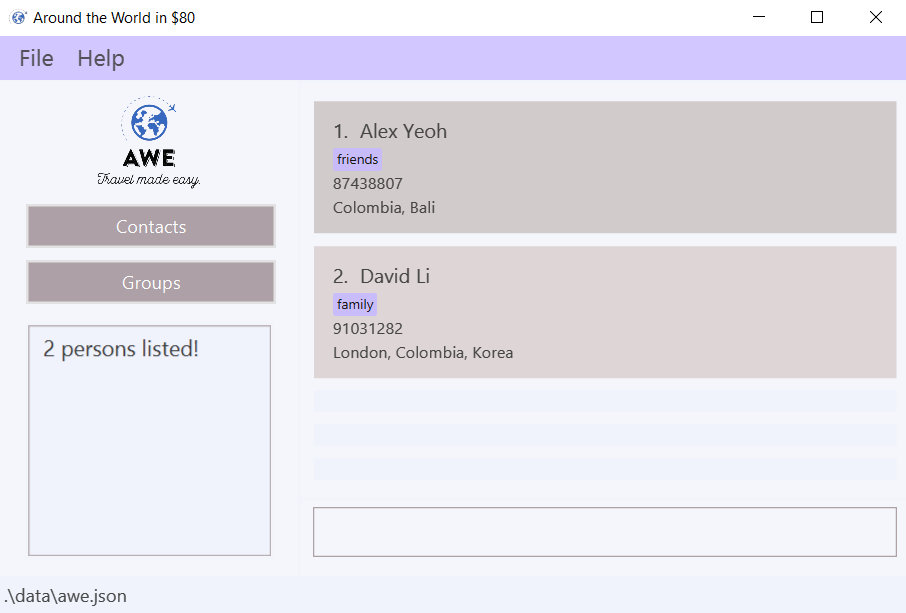
Fig 2. Result for 'findcontacts alex david'
Click here to return to table of contents
3.2. Groups
3.2.1. Listing all groups : groups
Shows a list of all groups in GroupPage.
Format: groups
- When you use this command, you will be brought to the groups page if you are currently viewing a different page.
3.2.2. Creating a travel group: creategroup
Creates a group of people of your choice from AWE. Adds you as a member of the group by default.
Format: creategroup gn/GROUP_NAME n/NAME1 [n/NAME2]... [t/TAG1]...
- GROUP_NAME is a mandatory field.
- GROUP_NAME are up to 50 characters only.
- A group with the same name as GROUP_NAME cannot exist for the creation of a group through this command.
- GROUP_NAME are case-sensitive, “Japan” and “japan” will be treated as 2 separate groups. Refer to FAQ for the rationale behind this.
- At least one NAME is necessary.
- The names are required to be in AWE and should match contact names exactly.
- Tags cannot have whitespace and special characters other than alphanumeric characters.
- TAG are up to 50 characters only.
- Tags are optional.
- When you use this command, you will be brought to the groups page if you are currently viewing a different page.
Examples:
creategroup gn/Bali n/Jacob Tan n/Max Chia n/Julianne Taycreategroup gn/London n/Justin Lee n/Raj Gopal n/Keith Chia
Click here to return to table of contents
3.2.3. Deleting a travel group: deletegroup
Deletes a group from your groups. All the details from the group are lost once this action is completed.
Format: deletegroup gn/GROUP_NAME
- GROUP_NAME is a mandatory field.
- A group with GROUP_NAME as its name must exist.
- GROUP_NAME are up to 50 characters only.
- When you use this command, you will be brought to the groups page if you are currently viewing a different page.
Examples:
deletegroup gn/Balideletegroup gn/London
3.2.4. Locating group by name: findgroups
Find groups whose names contain any of the given keywords.
Format: findgroups KEYWORD [MORE_KEYWORDS]
- The search is case-insensitive. e.g
londonwill matchLondon. - The order of the keywords does not matter. e.g.
United Stateswill matchStates United. - Only the group name is searched.
- Only full words will be matched e.g.
Londonwill not matchLond. - Groups matching at least one keyword will be returned (i.e.
ORsearch). e.g.Taiwan Malaysiawill returnTaiwan,Malaysia. - When you use this command, you will be brought to the groups page if you are currently viewing a different page.
Examples:
-
findgroups LondonreturnsLondonandlondon trip -
findgroups Taiwan MalaysiareturnsTaiwanMalaysia
Click here to return to table of contents
3.2.5. Adding a contact to an existing group: groupaddcontact
Add contact in contact list into an existing travel group.
Format: groupaddcontact gn/GROUP_NAME n/CONTACT_NAME1 [n/CONTACT_NAME2] ...
- Group name in the user input must already be an existing group.
- The search is case-sensitive. e.g
hanswill not matchHans. - Only the name is searched.
- Only full words will be matched e.g.
Hanwill not matchHans. - Type in the full name of contacts to add.
- Duplicate members in a group/user input will not be added.
Examples:
-
groupaddcontact gn/Bali n/Irfan Ibrahimto add Irfan Ibrahim into the Bali travel group. -
groupaddcontact gn/Prague n/Bernice Yu n/David Li n/Alex Yeohto add Bernice Yu, David Li, and Alex Yeoh into the Prague travel group.
3.2.6. Removing a contact from an existing group: groupremovecontact
Remove contact in contact list from an existing travel group.
Format: groupremovecontact gn/GROUP_NAME n/CONTACT_NAME [n/CONTACT_NAME] ...
- Group name in the user input must already be an existing group.
- The search is case-sensitive. e.g
hanswill not matchHans. - Only the name is searched.
- Only full words will be matched e.g.
Hanwill not matchHans. - Type in the full name of contacts to remove.
- Members can only be removed if they are in the travel group.
Examples:
-
groupremovecontact gn/Bali n/Irfan Ibrahimto remove Irfan Ibrahim from the Bali travel group. -
groupremovecontact gn/Prague n/Bernice Yu n/David Li n/Alex Yeohto remove Bernice Yu, David Li, and Alex Yeoh from the Prague travel group.
Click here to return to table of contents
3.2.7. Adding a tag to an existing group: groupaddtag
Add tag for an existing travel group.
Format: groupaddtag gn/GROUP_NAME t/TAG [t/TAG2] ...
- Group name in the user input must already be an existing group.
- The search is case-sensitive. e.g
baliwill not matchBali. - Only full words will be matched e.g.
Balwill not matchBali. - Duplicate tags in a group/user input will not be added.
- TAG are up to 50 characters only.
Examples:
-
groupaddtag gn/Bali t/Friendsto indicate that the Bali travel group is with friends. -
groupaddtag gn/Prague t/Family t/Cousinsto indicate that the Prague travel group is with family, more specifically, cousins.
3.2.8. Removing a tag from an existing group: groupremovetag
Remove tag from an existing travel group.
Format: groupremovetag gn/GROUP_NAME t/TAG [t/TAG2] ...
- Group name in the user input must already be an existing group.
- Tag has to be in existing group before it can be removed.
- TAG are up to 50 characters only.
- The search is case-sensitive. e.g
baliwill not matchBali - Only full words will be matched e.g.
Balwill not matchBali - Duplicate tags in a group/user input will not be removed.
Examples:
-
groupremovetag gn/Bali t/Friendsto remove the friends tag from the Bali travel group. -
groupremovetag gn/Prague t/Family t/Cousinsto the tags family and cousins from the Prague travel group.
Click here to return to table of contents
3.2.9. Editing travel group name: groupeditname
Edit group name for an existing travel group.
Format: groupeditname gn/OLD_GROUP_NAME gn/NEW_GROUP_NAME
- Group name in the user input must already be an existing group.
- The search is case-sensitive. e.g
baliwill not matchBali. - Only full words will be matched e.g.
Balwill not matchBali. - GROUP_NAME are up to 50 characters only.
Examples:
-
groupeditname gn/Bali gn/Thailandto change the group name from Bali to Thailand. -
groupeditname gn/Germany gn/Munichto change the group name from Germany to Munich.
Click here to return to table of contents
3.3. Expenses
3.3.1. Listing expenses of a specified group: expenses
Shows a list containing all existing expenses within the specified travel group.
Format: expenses gn/GROUP_NAME
- GROUP_NAME argument is mandatory.
- GROUP_NAME must correspond to the name of an existing travel group.
- When you use this command, you will be brought to the expense page for the specified group if you are currently viewing a different page.
Examples:
-
expenses gn/Londonshows all the expenses of the group named London.
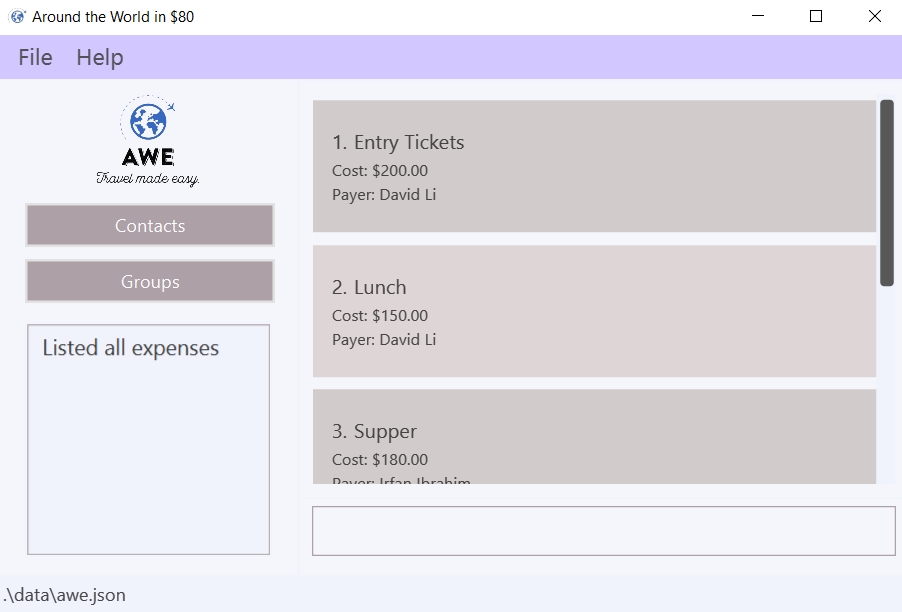
Fig 3. Result for 'expenses gn/London'
Click here to return to table of contents
3.3.2. Adding a shared expense: addexpense
Adds a shared expense to the specified travel group. The expense can be paid for and split among any number of contacts within the travel group.
Format: addexpense n/PAYER_NAME gn/GROUP_NAME $/TOTAL_AMOUNT_PAID d/DESCRIPTION [n/PAYEE_WHO_MADE_A_PERSONAL_PAYMENT] [$/PAYEE'S_PERSONAL_PAYMENT_TO_EXCLUDE_FROM_TOTAL_AMOUNT] [ex/PERSON_TO_EXCLUDE_FROM_EXPENSE]
- There should be only one PAYER_NAME in the command.
- PAYER_NAME must be immediately followed by the GROUP NAME.
- By default, all members of the group will be included in the expense.
- The names are required to be in AWE.
- The names are required to be in the specified group.
- COST has a limit of one billion and any addition or entering of COST more than one billion will result in it defaulting to a cost of one billion.
- The total expenses of a group also cannot exceed one billion.
- COST should only have a maximum of two decimal places, otherwise the COST will be rounded off to the nearest two decimal places.
- COST should not be negative.
- DESCRIPTION does not need to be unique.
- Each personal payment has to be a name immediately followed by the amount of the personal payment.
Examples:
addexpense n/Nic gn/Catch up $/50 d/Movie and dinneraddexpense n/Tom gn/Date $/60 d/Big meal but Jerry wants to pay for his own Coke n/Jerry $/2addexpense n/Keith gn/Movie night $/40 d/For movie but Kelly didn't watch ex/Kellyaddexpense n/Jerry gn/Catch up $/50 d/dinner n/Tom $/20 ex/Ryan
Click here to return to table of contents
3.3.3. Deleting a shared expense: deleteexpense
Deletes a shared expense from a travel group. This command deletes the expense for all members involved in the expense.
Format: deleteexpense INDEX
- INDEX argument is mandatory.
- INDEX has to be between 1 and the length of the list of expenses visible to the user on the screen.
- Since the command deletes the expense based on the list visible to the user, it is necessary for the user to be viewing a list of expenses when utilising this command. This means that the user must have entered a
findexpensesorexpensescommand just prior to entering thedeleteexpensecommand.
Examples:
deleteexpense 1deleteexpense 2
Click here to return to table of contents
3.3.4. Locating a shared expense by description: findexpenses
Finds expenses within the specified group which descriptions contain any of the given keywords.
Format: findexpenses KEYWORD [MORE_KEYWORDS] gn/GROUP_NAME
- The search is case-insensitive. e.g
dinnerwill matchDinner. - The order of the keywords does not matter. e.g.
Dinner Transportationwill matchTransportation Dinner. - Only the description is searched.
- Only full words will be matched e.g.
Dinnerwill not matchDinners. - Expenses matching at least one keyword will be returned (i.e.
ORsearch). e.g.Dinner Transportationwill returnFriday dinner,Transportation tickets. - When you use this command, you will be brought to the expense page for the specified group if you are currently viewing a different page.
Examples:
-
findexpenses dinner gn/LondonreturnsdinnerandFriday dinnerin the groupLondon -
findexpenses lunch souvenirs gn/Londonreturnslunch,souvenirsin the groupLondon
Click here to return to table of contents
3.3.5 Calculating total spending of each user: transactionsummary
Displays the spending of all users in the group.
Format: transactionsummary gn/GROUP_NAME
- GROUP_NAME is a mandatory field.
- A group with GROUP_NAME as its name must exist.
- When you use this command, you will be brought to the spending page for the specified group if you are currently viewing a different page.
Examples:
transactionsummary gn/Balitransactionsummary gn/London
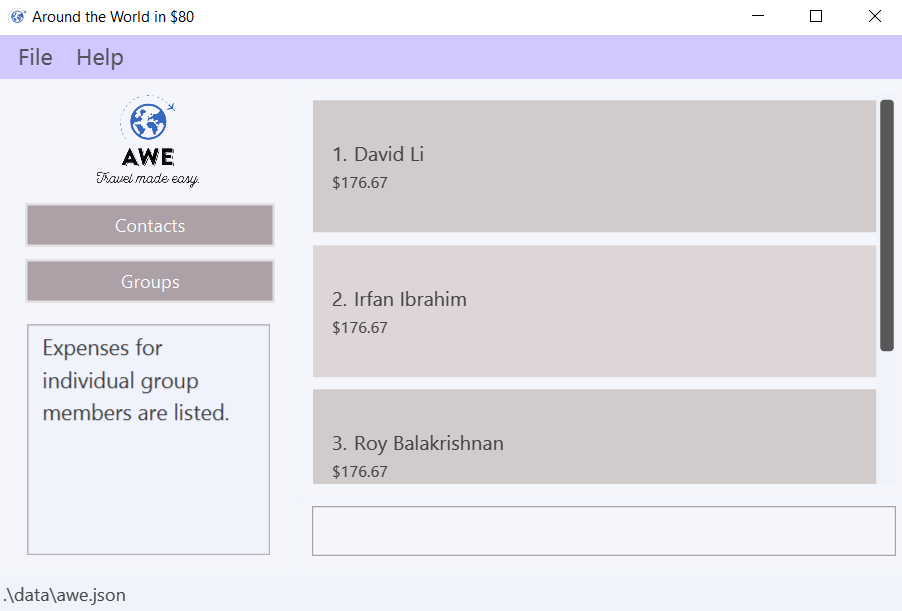
Fig 4. Result for 'transactionsummary gn/London'
Note: When a contact is deleted or removed from the group, the functioning of this command does not change. The deleted contact may still be part of the list of spending depending on the expenses they had previously.
Click here to return to table of contents
3.3.6. Calculating payments to make: calculatepayments
Uses the net spend of the user on the trip to tabulate a fast set of payments to settle the debts between members of the group.
Format: calculatepayments gn/GROUP_NAME
- GROUP_NAME is a mandatory field.
- A group with GROUP_NAME as its name must exist.
- Output e.g. [
John pays Mark $20.50,Sara pays Dev $15]. - When you use this command, you will be brought to the payments page for the specified group if you are currently viewing a different page.
Examples:
calculatepayments gn/Balicalculatepayments gn/London
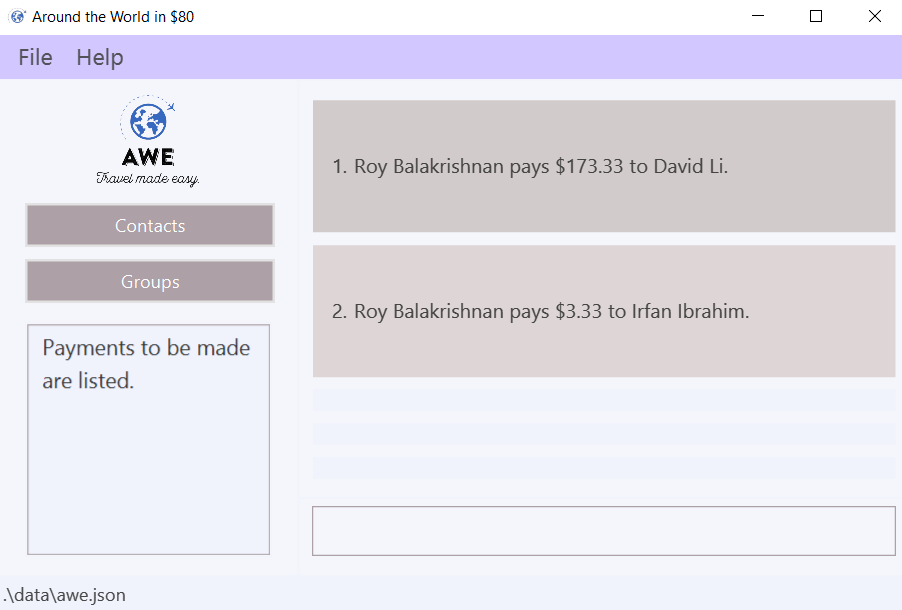
Fig 5. Result for 'calculatepayments gn/London'
Note: When a contact is deleted or removed from the group, the functioning of this command does not change. The deleted contact may still be part of the list of payments depending on the expenses they had previously.
Click here to return to table of contents
3.4. Miscellaneous
3.4.1. Viewing help : help
Shows a message explaining how to access the help page.

Fig 6. Help message
Format: help
3.4.2. Clearing all entries : clearalldata
Clears all entries from AWE.
Format: clearalldata
- After clearing of data,
contactspage will be shown.
3.4.3. Exiting the program : exit
Exits the program.
Format: exit
3.4.4. Saving the data
AWE data are saved in the hard disk automatically after any command that changes the data. There is no need to save manually.
Click here to return to table of contents
3.4.5. Editing the data file
AWE data is saved as a JSON file [JAR file location]/data/awe.json. Advanced users are welcome to update data directly by editing that data file.
- If the contact details in the JSON file are changed without making the same changes to expenses, AWE will treat the old and new contacts as separate contacts.
Click here to return to table of contents
4. FAQ
Q: Why is NAME case-sensitive?
A: Since identical names are very common in many cultures, we have decided to allow the addition of 2 contacts such as “jun jie” and “Jun Jie” in order to keep track of their numbers.
Furthermore, since AWE deals with overseas travels, quite a number of travellers might get a new overseas number when they are travelling. This will allow users to keep track of both
their local and overseas local separately. Deleting the number after returning from the trip will be easier as well. In both cases, users can distinguish the 2 contacts with similar names using tags.
This is also consistent with most mobile-phones, wherein contact names are case-sensitive.
To address the overseas number use case, for our next release, we are considering providing users with the ability to input more than one phone number when adding a contact.
Q: Why is GROUP_NAME case-sensitive?
A: Similar to the above question, a user might travel to the same destination more than once.
This will allow the addition of each individual trips.
To address this use case, we are considering requiring a DATE_TIME parameter when creating a group.
We did not do so for this release due to concerns that two separate groups of users might be on a trip at the same location in the same time frame.
In this case, users might be unable to create two groups, even though the use case would merit such an action.
Q: Why are some commands accept an index as an argument whereas other commands accept names as an argument?
A: Contact-related commands and Expense-related commands both use
an index to identify which contact/expense to modify. Users can simply view the list of contacts/expenses and choose
the relevant index in a convenient manner as compared to typing out the full name. However, groups contain a large
amount of sensitive information (such as membership and expenses) that cannot be recovered upon deletion. As such, our
team decided to implement Group-related commands by accepting the unique group name as an
argument. This minimizes the chances of accidentally deleting a group.
Q: How do I transfer my data to another computer?
A: Install AWE on the other computer and replace the empty data file it creates with the data file used by the AWE on your previous computer.
Click here to return to table of contents
Q: What if the Jar file does not open properly when I double click on it?
A: Open a command prompt in that folder and run the command java -jar awe.jar.
Q: What do I do if I see awe.jar cannot be opened because it is from an unidentified developer when I double click the jar file on a mac?
A: Go to System Preferences -> Security and Privacy -> General and click on Open anyways as such

Fig 7. Mac security preference
If your questions are not answered in the FAQ, check out the issue page on our GitHub linked here.
Click here to return to table of contents
5. Command summary
5.1 Contacts commands
| Action | Format, Examples |
|---|---|
| View Contacts | contacts |
| Add Contact |
addcontact n/NAME p/PHONE_NUMBER [t/TAG]… e.g., addcontact n/James Ho p/22224444 t/friend t/colleague
|
| Delete Contact |
deletecontact INDEXe.g., deletecontact 3
|
| Edit Contact |
editcontact INDEX [n/NAME] [p/PHONE_NUMBER] [t/TAG]…e.g., editcontact 2 n/James Lee
|
| Find Contacts |
findcontacts KEYWORD [MORE_KEYWORDS]e.g., findcontacts James Jake
|
Click here to return to table of contents
5.2 Groups commands
| Action | Format, Examples |
|---|---|
| View Groups | groups |
| Create Group |
creategroup gn/GROUP_NAME n/NAME1 [n/NAME2]... [t/TAG]... e.g., creategroup gn/Bali n/Jacob Tan n/Max Chia n/Julianne Tay t/friends
|
| Delete Group |
deletegroup gn/GROUP_NAME e.g., deletegroup gn/Vienna
|
| Add Contact to Group |
groupaddcontact gn/GROUP_NAME n/NAME1 [n/MORE_NAMES]... e.g., groupaddcontact gn/Bali n/Jacob Tan
|
| Add Tags to Group |
groupaddtag gn/GROUP_NAME t/TAG1 [t/MORE_TAGS]... e.g., groupaddtag gn/Bali n/friends
|
| Edit Group Name |
groupeditname gn/OLD_GROUP_NAME gn/NEW_GROUP_NAME e.g., groupeditname gn/Bali gn/Hanoi
|
| Remove Tags from Group |
groupremovetag gn/GROUP_NAME t/TAG1 [t/MORE_TAGS]... e.g., groupremovetag gn/Bali n/friends
|
| Remove Contact from Group |
groupremovecontact gn/GROUP_NAME n/NAME1 [n/MORE_NAMES]... e.g., groupremovecontact gn/Bali n/Jacob Tan
|
| Find Groups |
findgroups KEYWORD [MORE_KEYWORDS]e.g., findgroups London Taiwan
|
Click here to return to table of contents
5.3 Expense commands
| Action | Format, Examples |
|---|---|
| View Expense |
expenses gn/GROUP_NAME e.g., expenses gn/London
|
| Add Expense |
addexpense n/PAYER_NAME gn/GROUP_NAME $/TOTAL_AMOUNT_PAID d/DESCRIPTION [n/PAYEE_WHO_MADE_A_PERSONAL_PAYMENT] [$/PAYEE'S_PERSONAL_PAYMENT_TO_EXCLUDE_FROM_TOTAL_AMOUNT] [ex/PERSON_TO_EXCLUDE_FROM_EXPENSE] e.g., addexpense n/Alex Yeoh gn/London $/50 d/Dinner n/Bernice Yu $/2 ex/David Li
|
| Delete Expense |
deleteexpense INDEX e.g., deleteexpense 1
|
| Find Expenses |
findexpenses KEYWORD [MORE_KEYWORDS] gn/GROUP_NAMEe.g., findexpenses dinner buffet gn/London
|
| Calculate Spending |
transactionsummary gn/GROUP_NAME e.g., transactionsummary gn/Bali
|
| Calculate Payments |
calculatepayments gn/GROUP_NAME e.g., calculatepayments gn/Bali
|
5.4 Miscellaneous Commands
| Action | Format, Examples |
|---|---|
| Clear Data | clearalldata |
| Help | help |
Click here to return to table of contents
6. Final Word
AWE hopes to revolutionize the group-travel space through its effective handling of shared expenses on a centralized platform to maximize the efficiency of payment and recollection of debts. Our team is committed to delivering a seamless experience for potential users. We are always looking to improve. As such, do drop us an email at awe80contact@gmail.com if you discover any bugs while using the application.